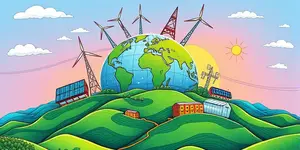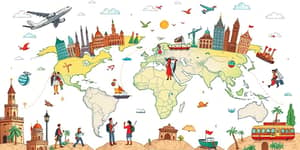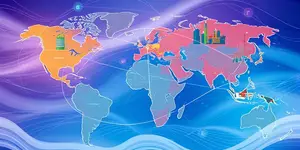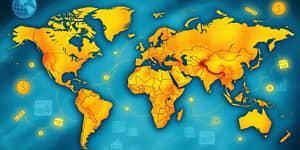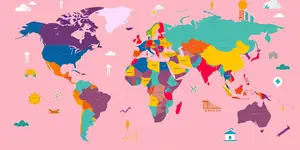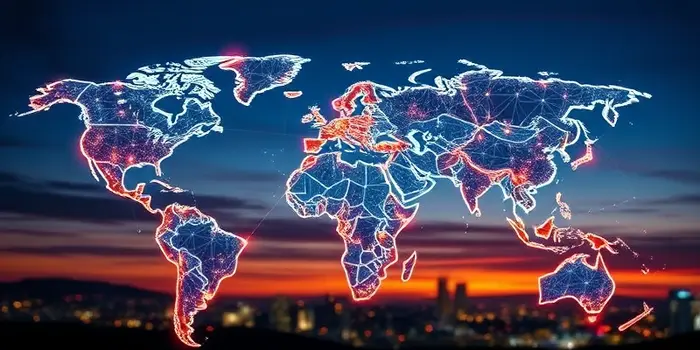
Globalization has long transcended mere economic exchange to shape societies, cultures, and global governance structures. What began as expanded trade routes evolved into a complex web of digital, financial, and human connections, creating an era of increasing interdependence and integration across borders.
Today, as we stand at the midpoint of 2025, it is clear that the forces driving globalization are both more powerful and more fragmented than ever. Shifting power dynamics, technological leaps, environmental imperatives, and cultural transformations demand a fresh understanding of how markets and communities interlink.
The 20th century witnessed an unparalleled expansion of trade and capital flows, driven by containerization, standardized regulations, and the liberalization of markets. These innovations reduced costs and opened new avenues for firms large and small to enter global supply chains.
Measured by indices such as the DHL Global Connectedness Index, cross-border interactions dipped after the 2008 financial crisis, only to rebound by 2013 above previous levels. This resilience demonstrated the enduring pull of integrated markets, even as policy shifts and protectionist measures created temporary headwinds.
The once-dominant Western alliances now share global influence with rising powers such as China and India, reshaping policy dialogues and trade partnerships. Nonstate actors—including multinational corporations, NGOs, and even transnational advocacy networks—are increasingly driving agendas at the international level, challenging the monopoly of nation-states.
In 2025, emerging technologies reshape global systems, ushering in a new era of connectivity and efficiency. Artificial intelligence is optimizing supply chains and personalizing consumer experiences, while quantum computing tackles complex logistics simulations that were previously out of reach. The rollout of 6G networks promises high-speed, low-latency global communications, enabling hyperconnected devices across continents.
Addressing climate change has become a core business strategy rather than a compliance checkbox. Investment in climate tech solutions—ranging from green hydrogen production facilities to carbon capture systems—is accelerating, supported by new policy incentives and public–private partnerships. Energy-as-a-service models are democratizing access to renewable power, empowering small and medium enterprises to participate in the energy transition.
Electrification of transport networks is reducing carbon footprints in global logistics, while decentralized power grids use smart meters and AI-driven demand forecasting to maintain stability. Companies that fail to align with these sustainability megatrends risk falling behind in both regulatory compliance and market reputation.
The pandemic and recent geopolitical tensions exposed vulnerabilities within just-in-time supply chains. Businesses are now prioritizing diversification of sourcing and nearshoring strategies to mitigate disruptions. New tariff regimes, particularly in the United States, affect up to 40 percent of certain components, forcing companies to reevaluate cost structures and lead times.
Organizations are investing in AI-powered risk assessment tools that analyze geopolitical developments in real time. Those that build automated, resilient supply chains gain a crucial competitive edge in uncertain markets.
Globalization’s impact on culture extends beyond mere consumption of foreign goods. Youth across continents are leveraging social media to form transnational identities, advocating for social justice, environmental protection, and greater political inclusion. This transcultural workforce collaboration enriches corporate innovation, bringing diverse perspectives into product design and marketing strategies.
At the same time, organizations must navigate potential tensions, balancing global brand consistency with local cultural sensitivities. Those that master this dynamic are rewarded with deeper customer loyalty and more engaged employees.
While global growth is forecast to decelerate to 2.9 percent in 2025, this figure masks significant regional variation. Emerging markets, particularly in Asia, continue to outpace developed economies, driven by domestic consumption and infrastructure investment. However, re-escalation of tariffs could trigger recessions in key economies if not managed carefully.
Central banks outside the United States are projected to bring inflation down to around 2 percent by 2026, creating more predictable monetary environments. Firms that adapt to evolving tariff structures and leverage strategic portfolio diversification can tap new markets while hedging policy volatility.
To thrive in this reimagined landscape, leaders must embrace agility, innovation, and purpose-driven strategies. Collaboration between governments, businesses, and civil society can unlock shared value in areas like digital standards, climate resilience, and research partnerships.
By aligning with these priorities, organizations and policymakers can shape a future of globalization that is inclusive, resilient, and sustainable.
References






